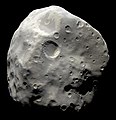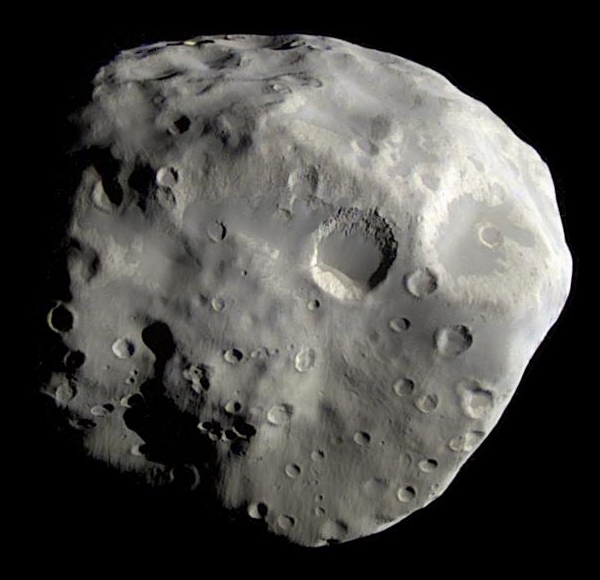پرونده:PIA09813 Epimetheus S. polar region.jpg
PIA09813_Epimetheus_S._polar_region.jpg (۶۰۰ × ۵۸۰ پیکسل، اندازهٔ پرونده: ۱۵۳ کیلوبایت، نوع MIME پرونده: image/jpeg)
تاریخچهٔ پرونده
روی تاریخ/زمانها کلیک کنید تا نسخهٔ مربوط به آن هنگام را ببینید.
| تاریخ/زمان | بندانگشتی | ابعاد | کاربر | توضیح | |
|---|---|---|---|---|---|
| کنونی | ۵ ژانویهٔ ۲۰۱۳، ساعت ۲۲:۴۹ |  | ۶۰۰ در ۵۸۰ (۱۵۳ کیلوبایت) | Antonsusi | Turn back ok, but the margin makes only a smaller, not optimised visible size of the object on pages. |
| ۱۹ دسامبر ۲۰۱۲، ساعت ۰۷:۵۹ |  | ۶۸۰ در ۶۴۰ (۲۲۲ کیلوبایت) | WolfmanSF | Reverted to version as of 17:18, 11 January 2008 - Solar System objects are normally portrayed with north up, which means solar illumination comes from the side; also, there's no artistic advantage to eliminating the margin | |
| ۹ ژانویهٔ ۲۰۱۱، ساعت ۰۲:۳۹ |  | ۵۸۰ در ۶۰۰ (۱۴۶ کیلوبایت) | Antonsusi | cropped, turned upright | |
| ۱۱ ژانویهٔ ۲۰۰۸، ساعت ۱۷:۱۸ |  | ۶۸۰ در ۶۴۰ (۲۲۲ کیلوبایت) | WolfmanSF | replace with processed NASA image |
کاربرد پرونده
صفحههای زیر از این تصویر استفاده میکنند:
کاربرد سراسری پرونده
ویکیهای دیگر زیر از این پرونده استفاده میکنند:
- کاربرد در af.wikipedia.org
- کاربرد در als.wikipedia.org
- کاربرد در ar.wikipedia.org
- کاربرد در ary.wikipedia.org
- کاربرد در arz.wikipedia.org
- کاربرد در ast.wikipedia.org
- کاربرد در as.wikipedia.org
- کاربرد در be.wikipedia.org
- کاربرد در bh.wikipedia.org
- کاربرد در bs.wikipedia.org
- کاربرد در ca.wikipedia.org
- کاربرد در ckb.wikipedia.org
- کاربرد در de.wikipedia.org
- کاربرد در el.wikipedia.org
- کاربرد در en.wikipedia.org
- Cassini–Huygens
- Epimetheus (moon)
- Wikipedia:Selected anniversaries/December 18
- Timeline of discovery of Solar System planets and their moons
- Moons of Saturn
- List of Solar System objects by size
- Naming of moons
- List of natural satellites
- User:Dabomb87/Sandbox
- Discovery and exploration of the Solar System
- User:Fotaun
نمایش استفادههای سراسری از این پرونده.



